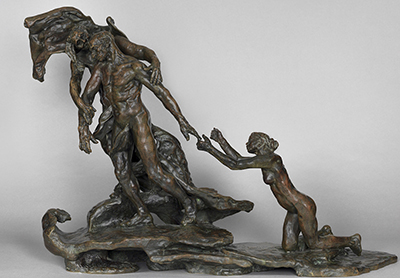 Buy Art Prints Now
Buy Art Prints Nowfrom Amazon
* As an Amazon Associate, and partner with Google Adsense and Ezoic, I earn from qualifying purchases.
The French government commissioned Camille Claudel to create The Mature Age in 1895. However, before the sculpture could be cast the commission was cancelled.
It is thought that Rodin was shocked by the sculpture when he saw it and may well have put pressure on the Ministry of Fine Arts to take the action. He also removed his support for Camille. The two artists had a sexual relationship whilst working together. Rodin finished the relationship to return when Rodin abandoned Camille to return to an older partner. It is possible that Rodin interpreted The Mature Age as a representation of their relationship, and he was not happy with this representation.
Despite the cancellation of the commission, the plaster version had been displayed before the bronze cast was produced in 1902. This bronze can be viewed at the Musée d'Orsay. The plaster version of this work of art was reported to have been destroyed or lost at that time of being cast. Rather, unusually she created a second version that was cast in 1913. The second version is exhibited at the Musée Rodin. Although both works of art are titled The Mature Age and are sometimes referred to as Destiny, The Path of life there are differences between them.
In the first piece, we see three naked figures on a flat plinth; a male figure who has a frail appearance and close to collapse has his right arm over the shoulder of an old woman. The old woman is leaning inwards and appears to be glaring at the third figure who is a younger woman who is kneeling and clutching the man's other arm. Perhaps the women are rivals and the man is powerless, has no control, and has to submit to destiny.
The final version also depicts there figures. The older woman is entwined in billowing drapery, and we see her arms encompassing the man as if she is trying to persuade him to come to her. The man does not look as fragile as in the previous version but it is still obvious that he has no control over his destiny. The third figure a younger woman again kneeling with outstretched arms towards the man. There is a very slight gap between them isolating both figures. The figures are on a plinth that is remnant of waves of the sea perhaps referring to the passage of time and how life progresses through the different ages of time and that we are powerless to control our destiny.



